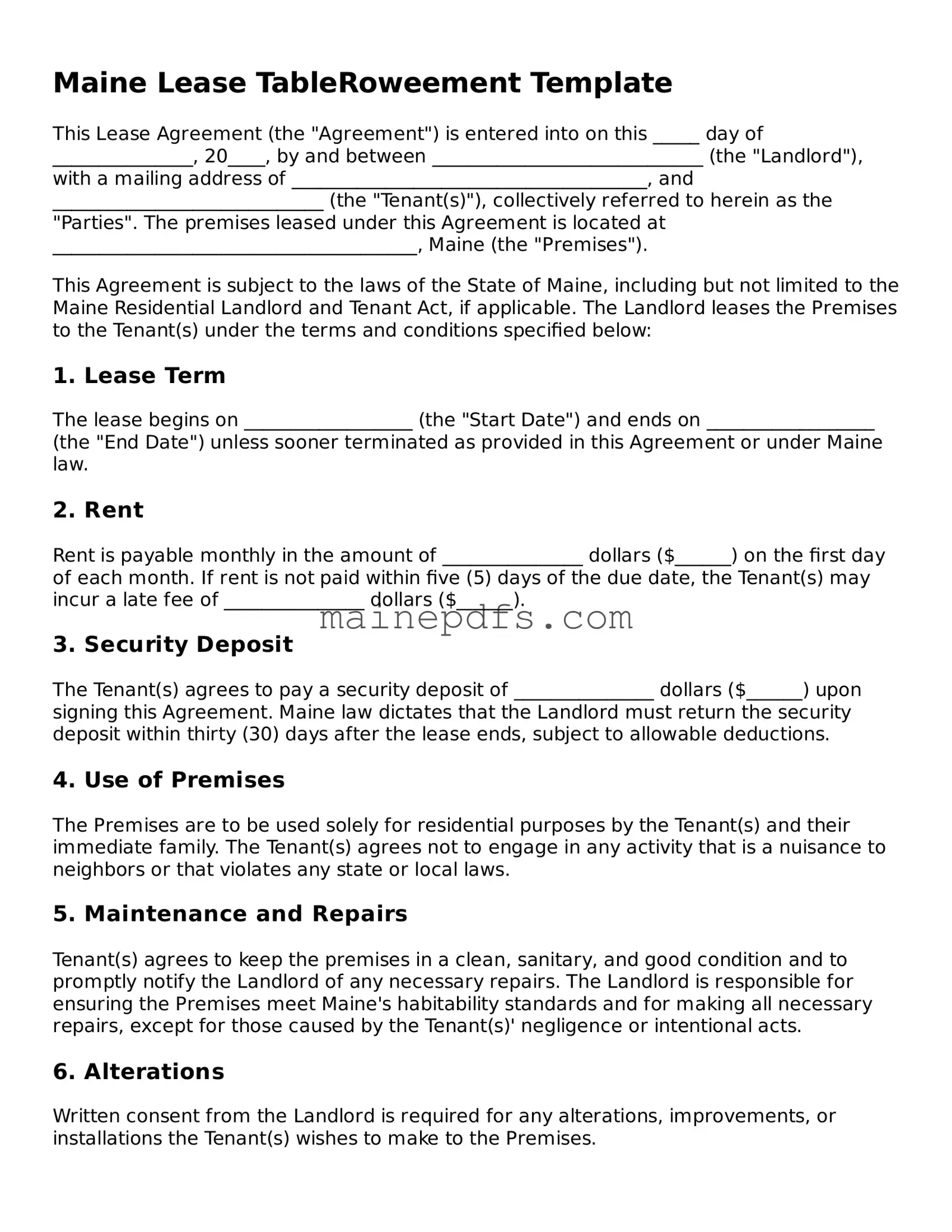Maine Lease TableRoweement Template
This Lease Agreement (the "Agreement") is entered into on this _____ day of _______________, 20____, by and between _____________________________ (the "Landlord"), with a mailing address of ______________________________________, and _____________________________ (the "Tenant(s)"), collectively referred to herein as the "Parties". The premises leased under this Agreement is located at _______________________________________, Maine (the "Premises").
This Agreement is subject to the laws of the State of Maine, including but not limited to the Maine Residential Landlord and Tenant Act, if applicable. The Landlord leases the Premises to the Tenant(s) under the terms and conditions specified below:
1. Lease Term
The lease begins on __________________ (the "Start Date") and ends on __________________ (the "End Date") unless sooner terminated as provided in this Agreement or under Maine law.
2. Rent
Rent is payable monthly in the amount of _______________ dollars ($______) on the first day of each month. If rent is not paid within five (5) days of the due date, the Tenant(s) may incur a late fee of _______________ dollars ($______).
3. Security Deposit
The Tenant(s) agrees to pay a security deposit of _______________ dollars ($______) upon signing this Agreement. Maine law dictates that the Landlord must return the security deposit within thirty (30) days after the lease ends, subject to allowable deductions.
4. Use of Premises
The Premises are to be used solely for residential purposes by the Tenant(s) and their immediate family. The Tenant(s) agrees not to engage in any activity that is a nuisance to neighbors or that violates any state or local laws.
5. Maintenance and Repairs
Tenant(s) agrees to keep the premises in a clean, sanitary, and good condition and to promptly notify the Landlord of any necessary repairs. The Landlord is responsible for ensuring the Premises meet Maine's habitability standards and for making all necessary repairs, except for those caused by the Tenant(s)' negligence or intentional acts.
6. Alterations
Written consent from the Landlord is required for any alterations, improvements, or installations the Tenant(s) wishes to make to the Premises.
7. Governing Law
This Agreement shall be governed by, and construed in accordance with, the laws of the State of Maine.
8. Entire Agreement
This document and any attached exhibits constitute the entire Agreement between the Parties pertaining to the subject matter hereof and supersedes all prior agreements, understandings, negotiations, and discussions, whether oral or written, of the Parties.
Signatures
IN WITNESS WHEREOF, the Parties have executed this Agreement as of the date first above written.
Landlord: ______________________________________
Date: ___________________________________________
Tenant(s): ______________________________________
Date: ___________________________________________
